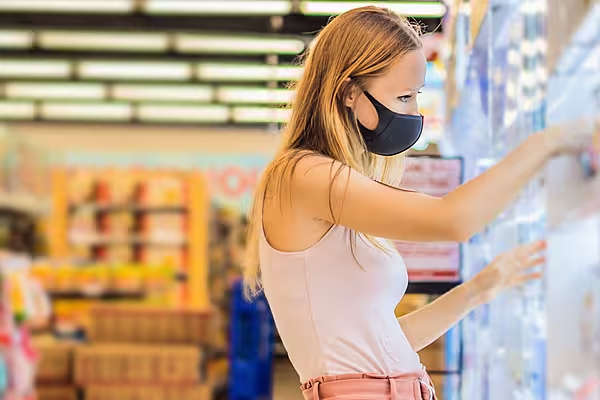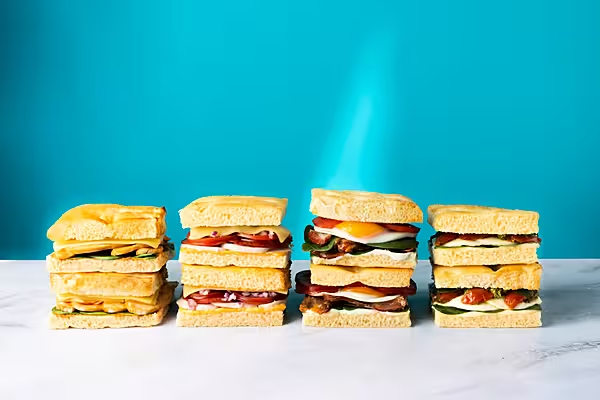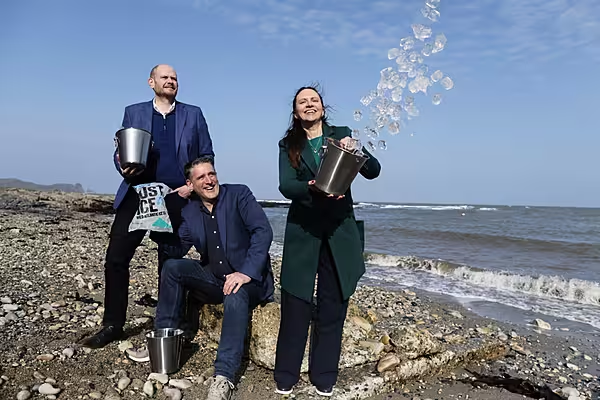As consumers continue to adapt to the changing world and the new protocols that are part of their daily lives, they have a lot to consider, including their health and safety, new shopping habits, and what the store of the future will look like, reports Peter Rigney
Currently, store design is all about Perspex screens, directional wayfinding, and sanitising stations, to support health and safety procedures in-store. But the pandemic is going to have a lasting impact on consumers and, in turn, on our store environments. As consumers’ shopping habits change, we are moving towards a future that will call for a more considered shop floor footprint.
This may be a shop floor that is more compact, that drives brand engagement through showcasing brand values, and uses the physical store as a ‘stage’ for key products, whether it is ‘fresh and local’ or convenience. This new physical space will need to be backed up by e- commerce to drive click and collect and online, allowing for the physical store to blend with digital solutions.
To help understand how stores can move towards this future, Peter Rigney of Tap Creations gives readers some pointers as to what they might weave into the fabric of their stores to improve the shopper experience, while protecting their business for the future.
Flexibility
The world is changing incredibly quickly, so planning for a future that is constantly changing requires flexibility. Flexibility will ensure that adjustments can be easily made to continuously improve the store, or to react to shopping behaviours that emerge out of the current crisis. Flexibility is about ensuring that the building blocks to your store can be moved to create new customer flow, or to drop in a new product range to respond to customer demand. Flexibility can come in many forms; layout, equipment, material finishes, signage and communication. Introducing flexibility will require planning and services to support it, but once it is applied in-store, future tweaks will be so much easier.
It is recommended that you identify the products or services that are fundamental to your store’s identity. This will ensure that your store does not lose a sense of what you stand for and will deliver a consistent environment for your customers.
It is also important to note that flexibility is not a trend that has emerged out of COVID-19 - stores such as Jumbo in the Netherlands have been designing spaces where the food offering can be easily changed. There is little or no counter-integration and there is a consistency to the floor and wall finishes, allowing food concepts to be swapped in and out as trends change, and reducing the cost and effort required to make those changes.
Health and safety
Providing a safe environment for shoppers is not a short-term situation. Right across our society, massive changes are being made that will become part and parcel of how we operate for years, if not generations, to come. Taking ownership of safety measures in your store communicates how your brand is taking responsibility to support your community.
Therefore, safety measures in store, such as hygiene and cleaning stations, reduced touchpoints in stores, and monitoring store numbers, all need to be highly visible. This will ensure that customers feel safe and understand the effort your store is making to protect them.
But do not be afraid to own this story and make it relevant to your store. We are seeing a huge increase in yellow gaffer tape being used around the country, but why not let your store communicate your safety message in your brand language. Safety in stores is going to be with us for a long time, so let’s make it look great and build it into the overall store environment and shopping experience.
Material choices
When it comes to how your store is finished, retail store design can learn a lot from the healthcare sector. There are two things to consider - can you choose materials that reduce the risk of bacteria and viruses living on them, and what is your customers’ perception of how
clean your store looks? In terms of material, anti-microbial material has been used throughout healthcare facilities for years in floors, walls and surfaces. Anti-microbial materials are surfaces that contain micro bacterial organisms that prevent micro- organisms from growing.
There are natural anti- microbial materials, such as copper, or manufactured versions such as LTV (Luxury Vinyl Flooring) that use a surface anti-microbial surface treatment and Silestone (a granite alternative). It is worth considering these options when you are introducing a new finish to your store.
Also, your shopper must see your store as being clean. Again, the healthcare sector has done a great job in making space look and feel clean and, while we don’t want to introduce a clinical look to the retail space, we can choose materials that are smooth and clutter-free, reducing the risk of providing a home for bacteria to live.
Local and loyalty
In a recent consumer study by Amarach.com, 87% of consumers agreed that they will buy more from local shops and 84% of people said they will buy more Irish products. Promoting local and making a hero of it in your store will help you to make meaningful connections with your shoppers. And this can be done in several ways - by highlighting a local supplier, promoting local businesses via a pop-up in-store, showing how you are making a difference in the community, or creating a space for people to meet safely. Store design can support any of
these approaches by ensuring that you allow space for them to happen, thus creating flexible environments that facilitate the promotion of local. With consumers being more willing to support local, there is an opportunity to increase your customer loyalty and speak about what they are looking for from their local store. To achieve this, use clear and direct brand communication in-store.
Digital supporting physical
Digital can impact your store in many ways, but when it comes to store design, it is about focusing on the customer journey and experience and ensuring that it is as seamless and engaging as possible. Digital provides data that helps you make better decisions. For example, it can help with customer numbers, track footfall, and identify what measures can be taken to spread that footfall around the store. It can connect with customers outside the store to promote your brand and offer, or it can help navigation in-store, via augmented reality or clear wayfinding signage.
In COVID-19 times, shoppers are doing bigger shops, less often, so planning your Friday night in on a Monday afternoon can be daunting.
However, digital signage or ‘ibeacons’ directed to customers devices can help them to make choices that best suit their needs. Customers are also moving through the store more quickly, so it would be important to integrate digital signage that can be easily changed to capture the shoppers’ attention. This digital signage can also be used to promote local and customer loyalty.
Other areas where the digital and physical worlds combine to enhance experience and aid convenience is the rise in innovative collection models, where customers can order online and collect from a local store via drive-thru or a drop box. COVID-19 has seen retailers advocate payment via card to reduce cash handling, and in the future we will see an increase in self- checkout and digital wallet solutions.
The use of mobile technology in the retail environment will influence a changing shopping experience in- store. Sainsbury’s, through its Smartshop mobile app, has rolled out a mobile version of its scan and go concept, allowing shoppers to scan items as they shop and pay at the check-out without unloading their trolley. Other retailers such as Walmart, Target and Starbucks are trialling self- checkout systems.
Your store as a stage
With the increase of online unlikely to slow down anytime soon, the future is where online and physical spaces go hand in hand to
promote the best of your business. Food retail can take learnings from the fashion industry, where setting the stage to showcase the best of your store and brand is high on the agenda to help drive sales. The objective of the store design is to work with your product offering and staff interaction to enhance the overall retail experience.
This doesn’t necessarily require drastic action now, but more of a shift in how you think about your store footprint and the best use of space to showcase what you have to offer. This might be a cooking demonstration in your grocery store, a space for cyclists in your convenience store, and a workshop on kid’s lunch ideas in your community store.
Additionally, enhancing your store through visual marketing and merchandising can augment the customer experience.
We are seeing examples of this in the dressing of butchery and cheese zones in new store formats. These might not be possible in the current climate but, post-pandemic, your consumers will want to connect back into society, and your store could be the ideal stage for them to do this.
In conclusion, food has always brought people together and food retail is no different. Our world is going to change, but through well thought out and creative store design, we can create a future where stores are exciting and inspiring places to visit.
About the author: Peter Rigney is the design director of TAP Creations, a Dublin-based agency that specialises in retail design. TAP Creations works with some of the leading food retailers and brands in Ireland to create brand and environment designs that are ‘innovative, credible and relevant
© 2020 Checkout – your source for the latest Irish retail news. Article by Peter Rigney. Click sign-up to subscribe to Checkout.’





